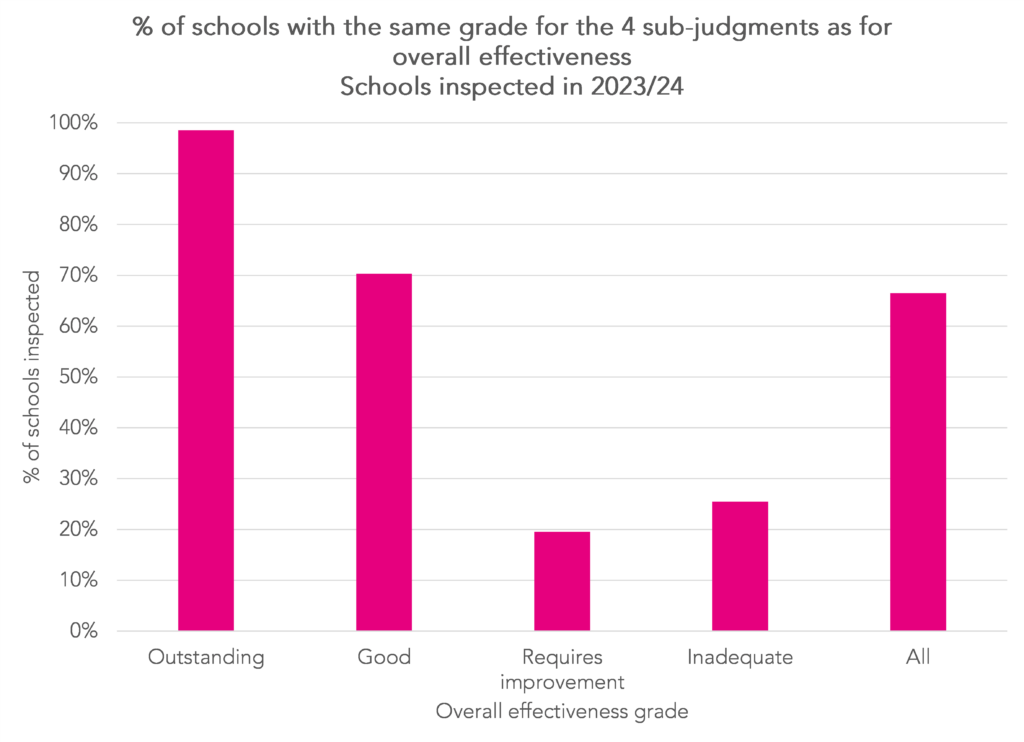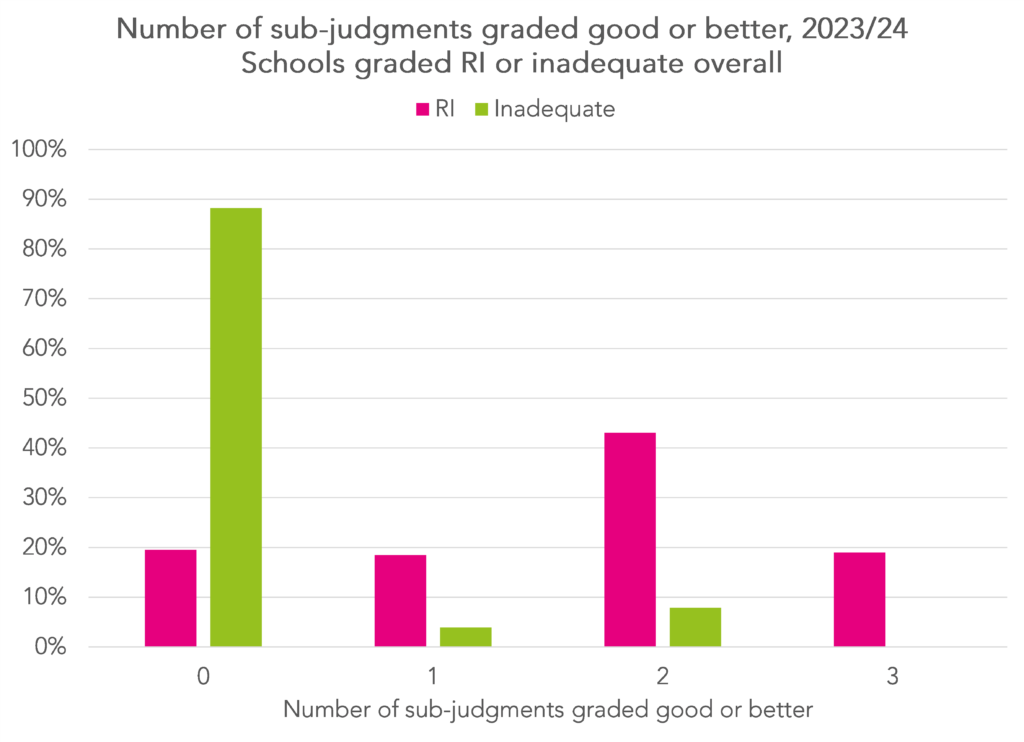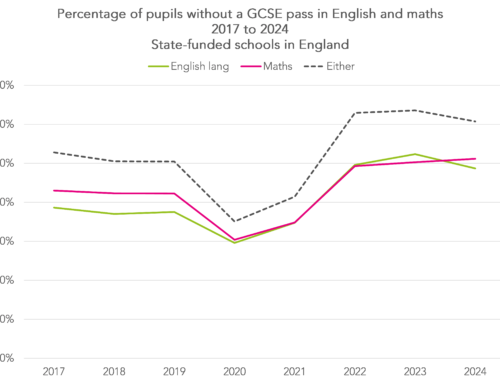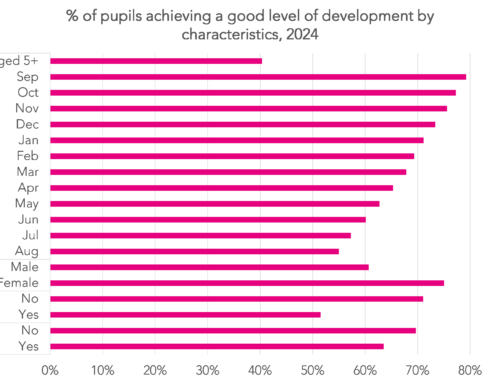On the first day of the new school year for many, the government scrapped overall inspection grades.
However, Ofsted will continue to publish the four graded sub-judgments for the rest of this year at the very least. These are
- Quality of education
- Behaviour and attitudes
- Personal development
- Effectiveness of leadership and management
But what difference will this really make? Do these sub-judgments tend to be the same as the overall effectiveness grade?
Let’s crack open the data to find out.
Data
I use data on published inspections for the 2023/24 academic year published by Ofsted. I only include inspections that resulted in an overall inspection grade. In other words, I exclude ungraded inspections. What will become of such inspections in future doesn’t seem clear (to me, at least).
In total, there were 3,660 inspections in the 2023/24 academic year broken down as follows:
- Nursery: 45
- Primary: 2760
- Secondary: 655
- AP: 58
- Special: 142
83% of the inspections in 2023/24 were graded good or better. This is a lower figure than the headline statistic that 91% of schools are graded good or better. Ofsted’s risk-based approach to inspection means that schools more likely to be less than good are disproportionately inspected in a given year.
Number of schools with sub-judgments that are the same as overall effectiveness
First of all, let’s calculate how many schools have exactly the same grade for each of the four sub-judgments as their overall effectiveness grade.
In almost all cases, schools graded outstanding overall were outstanding across all four sub-judgments.
70% of schools graded good were graded good across all four sub-judgments.
However, schools graded requires improvement or inadequate were more variable.
Schools graded good or better for sub-judgments but RI or inadequate overall
569 schools were graded requires improvement (RI) overall in 2023/24. Another 51 were graded inadequate.
Many of the schools graded RI, and a small proportion of those graded inadequate, were graded good (or better) for at least one of the four sub-judgments.
62% of schools graded RI overall were graded good or better for at least 2 of the sub-judgments.
Summing up
So what difference will this make?
Schools graded inadequate for any of the four sub-judgments will continue to face intervention. In effect this is no change. An inadequate rating on any of the four sub-judgments would have led to an overall rating of inadequate.
Almost all schools graded outstanding are outstanding across all four sub-judgments, so there will be almost no change for them.
Most schools graded good overall will face no change. The majority are graded good for all four sub-judgments although there is a small amount of variability. 28% of schools graded good in 2023/24 were judged outstanding on at least one of the four sub-judgments. Just 1% were judged RI on at least one sub-judgment.
It will make more of a difference for schools graded RI, though these are relatively small in number. Most schools graded RI overall in 2023/24 were graded good or better for at least 2 of the 4 sub-judgments. In other words, anyone looking at sub-judgments for a school judged RI overall will be faced with a variable set of sub-judgments.
This should mean less of a cliff-edge between schools that would previously have been judged good or RI overall.
Want to stay up-to-date with the latest research from FFT Education Datalab? Sign up to Datalab’s mailing list to get notifications about new blogposts, or to receive the team’s half-termly newsletter.










Thanks for this – for the schools judged RI was there a correlation with any particular sub-judgement being RI – ie Q of E , L and M?
Hi Debbie. Yes, it was usually for personal development (74% of schools judged RI overall were good for personal development) followed by behaviour (61% of schools judged RI overall were good for behaviour).
Hi David. Is the picture the same for primary and secondary schools with regard to overall judgment and sub judgements being good?
Do you have any analysis?
James
Hi James. Secondary schools more likely to be judged RI than primary schools. But of those primaries judged RI overall, 85% had at least 1 good sub-judgment (31% of secondaries judged RI overall).